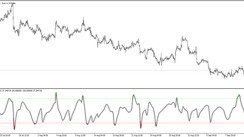Delving Deeper into the Complex World of Derivatives and Options
In the ever-evolving and intricate financial markets landscape, derivatives stand tall as premier financial instruments encapsulating a kaleidoscope of values, risks, and frameworks all firmly grounded on the fluctuating dynamics of underlying assets. Spanning across a diverse array of entities, including equities, currencies, and even commodities, derivatives offer an extensive range of investment avenues. Taking a subset space in this expansive landscape, options come with a distinctive privilege, providing the holder with a right, not a binding commitment, to initiate a purchase or sale transaction of the pivotal asset, thus offering a dynamic and flexible financial tool.
Unveiling the Intricacies of the Derivatives Landscape
Within the vibrant financial market, derivatives are contracts birthed from consensus among various parties, anchored firmly on an agreed underlying entity or a consortium of assets, which can range from established market indices such as the esteemed S&P index to bonds, currencies, and commodities. This financial instrument opens up a diverse spectrum of options for seasoned investors and newcomers alike.
The intricacy of derivatives lies in their structured design, bearing a well-defined price and a stipulated expiration or settlement period, introducing a pivotal tool in the strategic financial and risk management arsenal. Their historical roots trace back to fostering secure and structured trading agreements in the agricultural sector, effectively revolutionizing traditional trading mediums from verbal agreements to well-documented contracts.
Key Takeaways to Fortify Your Understanding
- Derivatives create a structured environment, fostering contracts grounded on mutual agreements surrounding underlying assets, facilitating a secure transaction landscape.
- Derivatives embrace futures contracts, swaps, and forward contracts, offering a rich array of financial dealings that cater to various investment preferences.
- Options, a sub-category of derivatives, present a flexible avenue by granting the holder the privilege to transact in the base asset, steering clear of mandatory obligations.
Options Uncovered: Navigating Through its Multifaceted Landscape
Predominantly in the investment sphere, options often resonate strongly with equity options, characterized as derivatives drawing their value attributes from a fundamental underlying stock. These intricate financial tools hand over the right, sans an obligatory clause, to trade a stock at a pre-agreed price within a designated timeframe, thereby ushering in a strategic advantage especially in tumultuous market conditions.
Here, the dynamics unfurl into call and put options, each furnishing the holder with distinctive rights regarding the underlying stock transactions, all governed through a pre-defined premium price, adding a deeper layer of strategy and financial intricacy in the options transactions landscape.
Further delving into this domain, we find American-style and European-style options, offering different levels of flexibility in execution, and catering to diverse investment strategies and risk tolerances, thus presenting a rich canvas for traders globally.
Venturing into Derivatives: A Closer Look at Futures Contracts and Swaps
Within the rich and expansive sphere of financial instruments, derivatives hold a paramount position, guiding investment strategies and bolstering financial portfolios across the globe. At this juncture, we dive deep into the substantial derivatives categories, namely futures contracts and swaps, unraveling their distinctive attributes and showcasing the strategic depth they offer in financial planning and risk management.
Futures Contracts: Mapping the Terrain
As we venture into the financial landscapes carved out by futures contracts, we find these derivatives offering a safeguard, a meticulously structured cushion against the often erratic and unpredictable market behaviors. Here’s a more detailed examination:
-
Standardized Contracts: Each contract is structured around a standard asset volume, such as 5,000 bushels of corn or 1,000 barrels of oil, offering clarity and uniformity in trading procedures.
-
Diverse Asset Base: From the agriculturally grounded assets to contemporary ones that include currency and weather predictions, the futures contracts encapsulate a rich spectrum of assets, offering a playground for both conservative and adventurous investors.
-
Preset Pricing Mechanism: The futures contracts stand with a firm commitment to buying or selling at predetermined prices, shielding the investors from the tumultuous fluctuations of market prices, and presenting a structured pathway to strategic investment.
Swap Agreements: The Flexible Financial Collaborators
Dipping further into the derivatives ocean, swap agreements emerge as flexible collaborators in the financial market space, fostering secure and adaptable avenues for managing financial assets through a series of cash flow exchanges over a mutually agreed period. Let’s dissect this further:
-
Interest Rate Swaps: These are intricate agreements facilitating the exchange of interest payments based on a principal amount, where one party might seek the stability of fixed-rate payments, while the other opts for floating interest rate payments, allowing for a dynamic yet balanced financial synergy.
-
Currency Swaps: A step into the international arena brings into focus currency swaps, where the involved parties agree to exchange principal and interest in different currencies, paving the way for a hedged strategy against potential currency fluctuation risks.
-
Transition to Centralized Exchanges: In a post-2008 financial crisis world, the regulatory environment nudged swaps towards centralized exchanges, promoting transparency and risk mitigation through centralized trading platforms, in turn fostering a more secure trading environment.
-
Strategic Financial Tools: Swap agreements emerge as potent tools, aiding corporations and individual investors in navigating changing investment objectives, adjusting to new repayment scenarios, or seizing financial benefits emerging from alternative cash flows.
With a meticulous structuring, futures contracts and swap agreements stand as pillar strategies in the derivatives landscape, offering a multifaceted, rich, and secure environment for investors to navigate the complex terrains of financial markets with strategy, insight, and foresight.
Forward Contracts Dissected: A Detailed Analysis
Forward contracts, an integral player in the currency transaction landscape, outline the specifics of a future trade at an agreed price, offering customization in expiry dates and transaction volumes, thus emerging as potent tools in hedging against the capricious nature of foreign exchange rates.
These contracts, while primarily hedging instruments, also carve a niche in the speculative trading space. Predominantly traded over the counter, these contracts entail a higher risk quotient due to potential counterparty defaults, necessitating a well-informed and cautious approach for all stakeholders involved.
Differentiating the Contours: Options versus Derivatives
As pivotal entities in the financial sphere, options and derivatives serve distinctive roles with a pronounced distinction lying in the discretionary execution rights that options empower their holders with. In stark contrast, derivatives mandate legal adherence to contract stipulations, albeit offering a potential exit strategy through pre-expiration sales, a pathway marred with its unique set of risks and potential financial losses.





